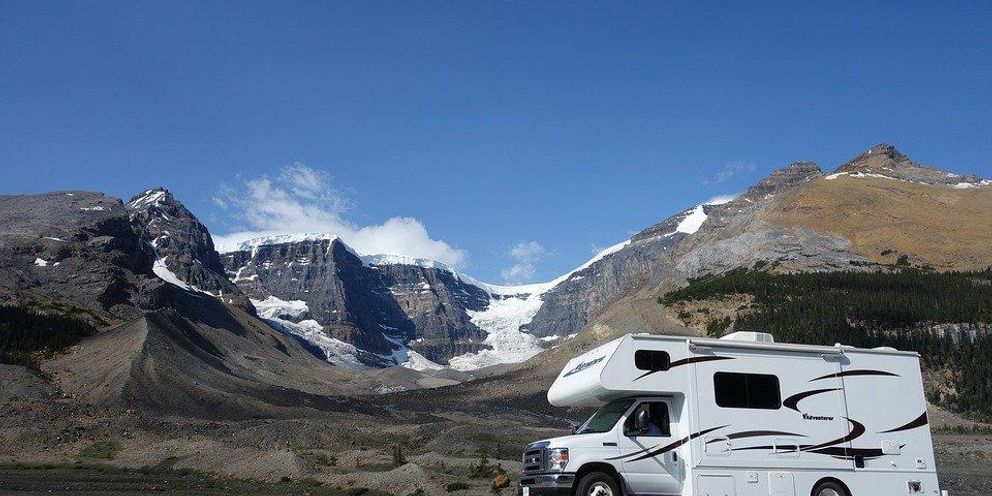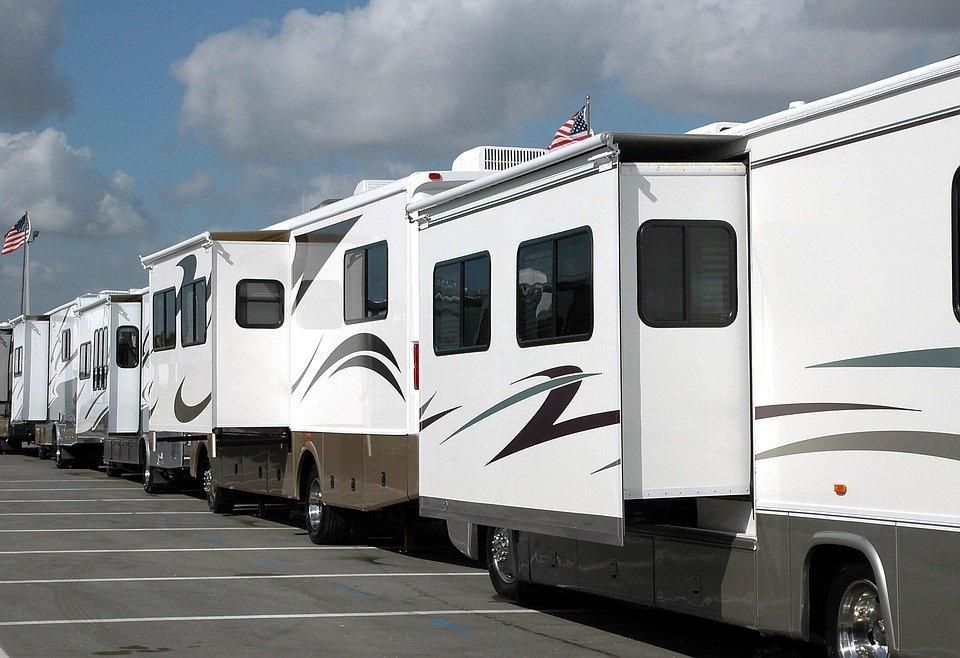
How To Keep Your RV Looking Like New and Running Forever!
Featured Image Credit: coloringcuties / Pixabay
Writer John Linden
The Current Market Outlook for Recreational Vehicles 2020 has been a devastating year for many economies around the globe. The Covid-19 virus was an unprecedented crisis that destroyed the businesses and livelihoods of many Americans. Unemployment rose higher in three months during the Covid-19 crisis than it did during the entire Great Depression. The travel restrictions and quarantine orders have brought international travel to a screeching halt, with airlines and TSA reporting a staggering 96% drop in air travel.
Many Americans are left stuck inside feeling restless, which is ultimately leading to an unforeseen phenomenon. A boom in the sales of recreational vehicles. Despite the looming economic crisis caused by the Covid-19 virus, the recreational vehicles market is expected to grow by US $11.7 billion dollars. So what’s causing this spike in sales? It makes sense if you think about it. Many Americans are turning to RVs as the antidote for cabin fever.

Featured Image Credit: paulbr75 / Pixabay
The RV Market Has Always Been a Volatile One
In the first quarter of 2020, the stock prices for Thor and Winnebago, the two largest publicly traded RV companies, tanked even worse than the S&P 500. Then surprisingly they climbed back and recovered just a few months later as the summer RV boom hit full swing. Out of the 31 major publicly traded automobile companies worldwide, Thor’s stock performed third best, losing out to only Tesla and Audi.
Once the initial scare of the virus came and passed, things quickly improved for the industry. Many Americans wanted a way to travel domestically and enjoy the great outdoors while still safely following their state’s social distancing recommendations.
This pandemic has also been a huge boom for remote working and schooling technologies. Many Americans are turning their work from home jobs into work from anywhere jobs by turning their recreational vehicles into mobile offices. Even when the travel restrictions are fully lifted, many Americans may feel weary about crowded airports and long flights overseas. Although an RV can be a substantial investment depending on what model you go for, vacationing at local camp grounds can save you some serious cash in the long run. If there’s any silver lining in this awful pandemic, it may be that families get back to the basics of camping, fishing, boating, hiking and biking together. The great outdoors and your loved ones are all you really need to make some wonderful lifetime memories.
How To Clean Your RV Inside and Out
Whether you’re one of the new RV owners just getting into the game, or a veteran to the lifestyle on your fourth or fifth model, you’ll need to do the proper maintenance to keep your investment in top condition and functioning properly for decades to come.
The first thing you’ll want to do is keep your RV clean, both inside and out. Not only does cleaning your RV keep it looking nice and new, it also gives you the opportunity to go over your vehicle with a fine tooth comb to make sure there aren’t any repairs needed. It’s a lot better to find a leak in your roof while washing your RV on a nice sunny day than it is to discover it during a torrential downpour while you’re sleeping!
You’ll need a hose, bucket, quality automotive soap, a long handle brush with soft bristles and a step ladder. Always work from the top down. The bottom of the vehicle is usually the dirtiest and you don’t want to rub that grit and grime all over your paint. Hose off any excess dirt before you begin scrubbing and rinse off the brush frequently before starting another section. Do you know what sandpaper is made out of? You guessed it. Sand! Rubbing just a tiny bit of sand against your paint will give your RV that swirl marked look in the sun, even when it’s spotless and clean.
Once your RV is washed and dried, using a quality automotive wax can provide an added layer of protection to your paint. Tree sap, bugs, branches, road salt, road tar, acid rain and even UV rays can wreak havoc on your paint job. If your RV is exposed to any of these more dangerous elements, it’s best to remove them from the paint as soon as possible. Use a non abrasive compound such as goo gone to remove bugs and sap. Using gasoline or paint thinner may strip your paint along with the crud you’re trying to remove.
When you’re ready to wax your RV, park it in a shady spot and allow the paint to cool off. Waxing your vehicle in the sun will cause the wax to dry too quickly, making it difficult to remove. Use a gentle automotive wax that doesn’t have any abrasive compounds which can damage your RV’s paint.
Take Care of Your Roof
The weakest point of any RV is the roof. It’s exposed to the elements far more than any other part of your vehicle. Rain, sun, snow, ice, hail, falling tree branches and sap. Over time this can wear away at the seams and cause leaks. Another bad thing about the roof is we rarely see it. It’s mostly out of sight, out of mind until you notice water trickling down the interior wall of your RV one rainy day.
Be sure to inspect your roof regularly. A lightweight, retractable step ladder is handy and stores away easily on trips. If you’re buying a used RV, it’s absolutely critical that you thoroughly inspect the roof before buying. Rough weather is a part of the RV experience and you shouldn’t be afraid of it. But simple maintenance can prolong the life of your investment.
Try to park your RV under a roof when it’s not in use. A car port or a barn that keeps the elements off it could go a long way. Keep a caulk gun handy with a few tubes of marine silicone. If you notice any worn out seams or punctures you can quickly and easily cover up those holes, shielding your interior from any further water damage.
Always Do A Pre-Trip Inspection
Whether it’s your first trip of the season or just a continuation of your cross country summer adventure, you’ll want to be diligent about your pre-trip inspections. There’s a reason why commercial truck drivers are required by law to do a pre-trip inspection every single time they head out on the road. It could potentially save your life, save the lives of other motorists on the road and it can also save you money in repairs.
Check your oil levels. Look for any signs of leaks dripping in the engine bay or any oil puddles on the ground below.
Check your engine battery. This is especially important if your RV has been sitting for a while. Batteries can lose up to 10% of their capacity every month while sitting in storage. If you haven’t been checking and recharging your battery during the winter months, this will be your first priority. Fully charge your battery for the season and make sure you have a pair of jumper cables stored in the RV just in case.
Check your belts and hoses. Scan for any signs of cracks or corrosion.
Check to make sure your tires are inflated to the proper air pressure and have a sufficient amount of tread remaining.
Check all your lights, both headlights and turn signals. Be sure you have spare bulbs and fuses handy just in case. This is especially important if you have a towable trailer. If your trailer has no working signals, this can be treacherous for other drivers behind you.
Make sure you have the proper tool kit and spare parts to fix a blown out tire. Also, learn how to do some basic repairs yourself. You might end up out in the middle of nowhere with no cell signal and no garage in sight.
Keep a quality fire extinguisher mounted in an easily accessible place in both the cab of your vehicle and in the living space of the RV.
Enjoy Your Next Adventure
At first glance, RV ownership can seem somewhat overwhelming. However, with just a little basic maintenance you and your family can get many great seasons of joy out of your RV. Now get out there and make some great memories!
Updated